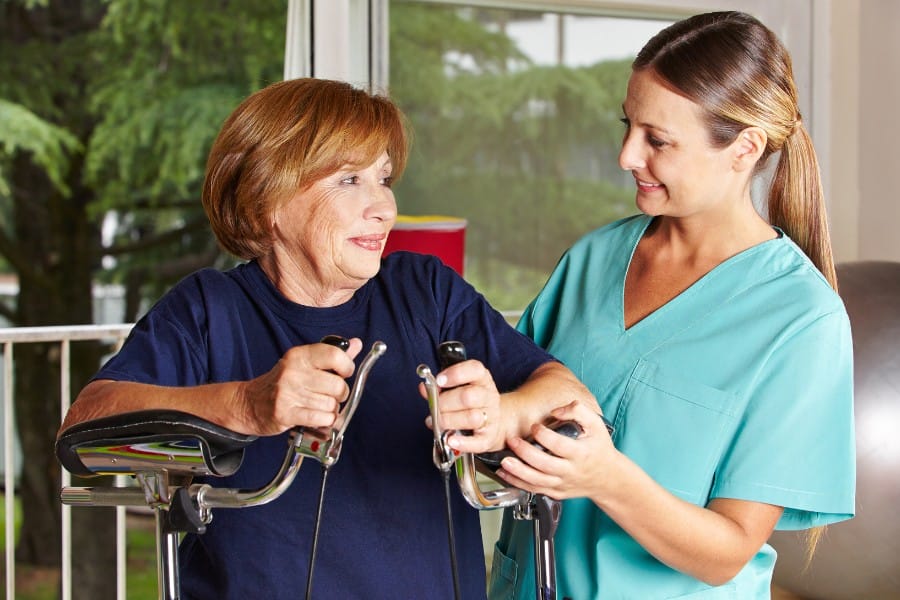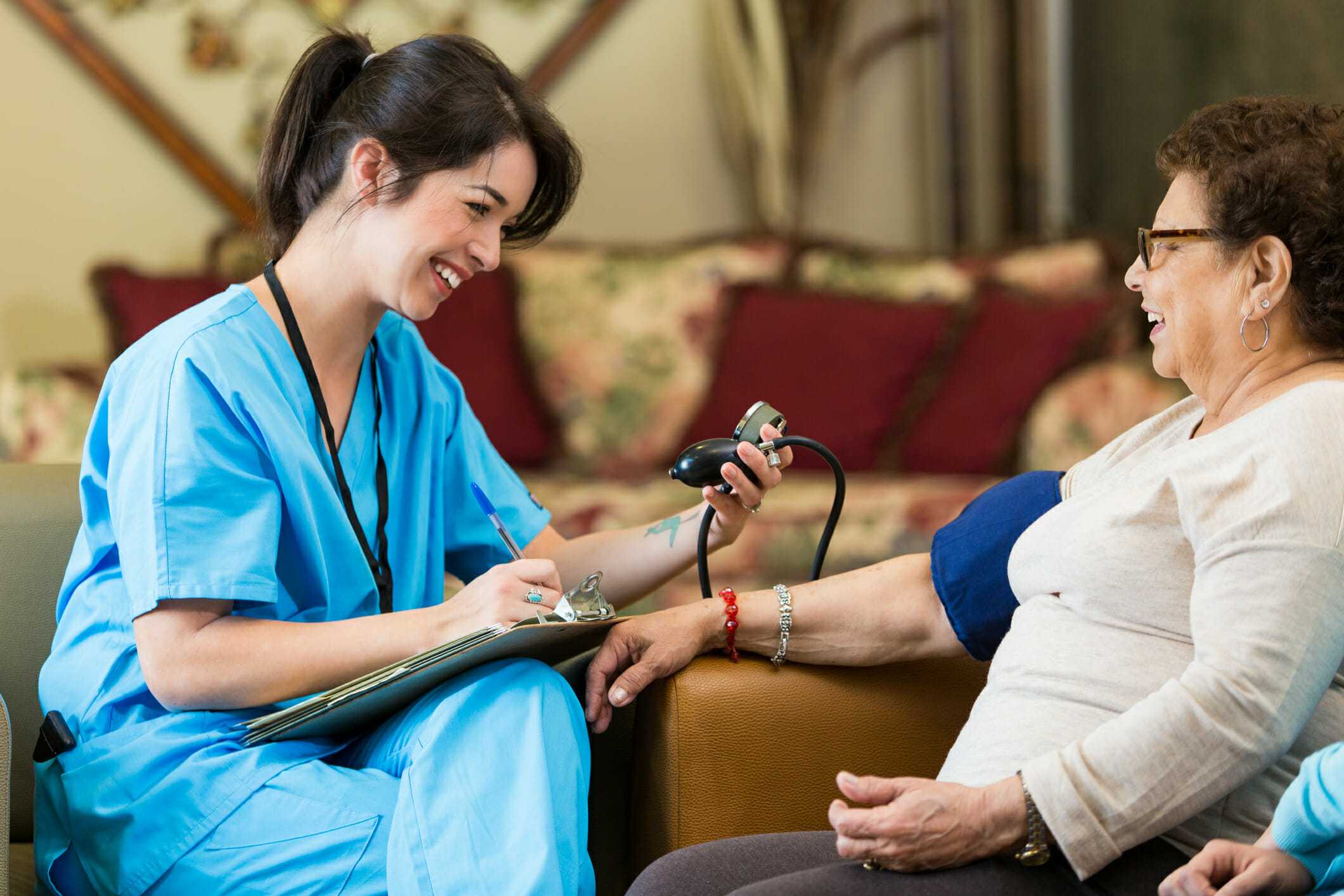Cardiovascular disorders are the leading cause of mortality and morbidity in the industrialized world.
More than 14 million people suffer from some form of coronary artery disease (CAD) or its complications, which include congestive heart failure (CHF), angina, or arrhythmias.
Of this number, approximately 1 million survivors of acute Myocardial Infarction (MI), as well as the more than 300,000 patients who undergo coronary bypass surgery annually, are candidates for cardiac rehabilitation.
What is Cardiac Rehabilitation?
IN THIS ARTICLE
Cardiac rehabilitation is a comprehensive, multi-disciplinary program designed to help patients with heart disease recover and improve their overall health.
The American Heart Association (AHA) defines cardiac rehabilitation as “a medically supervised program designed to improve cardiovascular health in individuals who have experienced a heart attack, heart failure, angioplasty, or heart surgery.”
The goal of cardiac rehabilitation is to reduce the risk of future heart events by addressing risk factors such as high blood pressure, high cholesterol, smoking, and physical inactivity.
The program typically involves exercise training, education, and counseling on nutrition, stress management, and other lifestyle changes.
Research has shown that cardiac rehabilitation can significantly improve outcomes for patients with heart disease, including reducing the risk of future heart events and improving overall quality of life.
The AHA recommends that all eligible patients participate in a cardiac rehabilitation program.
Cardiac rehabilitation is typically divided into four phases, each with different goals and objectives.
Phase I is the acute phase, which begins in the hospital immediately after a heart event or surgery.
Phase II is the subacute phase, which typically lasts 6-12 weeks and involves supervised exercise training and education.
Phase III is the maintenance phase, which involves ongoing exercise and lifestyle modification.
Phase IV is the long-term maintenance phase, which is designed to help patients maintain their gains and continue to make healthy lifestyle choices.
Cardiac rehabilitation programs help patients who have suffered the adverse pathophysiologic and psychological consequences of cardiac events.
Currently, there are about 400,000 patients who undergo coronary angioplasty each year, making up another subgroup that could benefit from cardiac rehabilitation.
Cardiac Patient Information
An additional 4.7 million patients with CHF are also eligible for a slightly modified rehabilitation program, as are the ever-increasing number of patients who have undergone heart transplantation.
Patients who are at low or moderate risk typically undergo early rehabilitation. Cardiac rehabilitation can:
- Improve the quality of life
- Reduce the need for medicines to treat heart or chest pain
- Lower the risk for hospital readmission for a heart problem
- Prevent or reduce the risk of future heart problems
- Help an individual live a longer, healthier life
Rehabilitation involves adopting heart-healthy lifestyle changes to address risk factors for cardiovascular disease.
These heart-healthy practices include exercise training, counseling to reduce stress and help patients return to a normal life, and patient education.
The program is often provided in an outpatient clinic or a hospital rehabilitation center by a cardiac rehabilitation team, which can include doctors, nurses, exercise specialists, physical and occupational therapists, dietitians or nutritionists, and mental health specialists, depending on the individual’s specific needs.
During cardiac rehabilitation, patients learn to exercise safely and increase their physical activity levels.
The goal of cardiac rehabilitation is to:
- Curtail the physical as well as the psychosocial effects of heart disease
- Relieve cardiac symptoms
- Reverse atherosclerosis, the build-up of fats and other substances in and on the artery walls
- Reintegrate heart disease patients into their families and communities successfully
- Limit the risk for reinfarction or sudden death
Among older patients, additional goals may include:
- Achievement of functional independence
- Prevention of premature disability
- Reduction in the need for custodial care
In observational studies, older patients have seen improvement in their exercise tolerance comparable to that of younger patients participating in similar exercise programs.
Cardiac rehabilitation services are an effective and safe intervention, especially when they are developed by a professional care team and personalized to the patient.
These services are undoubtedly an essential part of a successful recovery plan for patients with multiple presentations of coronary heart disease and heart failure.
A nutritionist may recommend a heart-healthy, well-balanced diet regimen.
Fruits, vegetables and whole grains can help protect your heart and reduce your risk of heart disease.
The DASH diet (Dietary Approaches to Stop Hypertension) and Mediterranean diet are among the top diets for heart and brain health.
Generally, these diets promote low-fat proteins, such as beans, lean meats and fish, as well as low-fat or fat-free dairy products, fruits, and vegetables.
The Importance of Cardiac Rehabilitation
Cardiac rehabilitation (CR) is a medically supervised program designed to improve the health and well-being of individuals with heart disease.
It is a comprehensive program that includes exercise training, education, counseling, and support for patients and their families.
Cardiac rehabilitation is a vital component of the overall management of patients with heart disease, and it has been shown to improve various important patient outcomes.
One of the key benefits of cardiac rehabilitation is the improvement in exercise capacity.
Patients who participate in cardiac rehabilitation programs have been shown to have increased exercise tolerance, which can lead to improved cardiovascular fitness and a decreased risk of future heart problems.
Additionally, cardiac rehabilitation can help to control cardiovascular risk factors such as high blood pressure, high cholesterol, and diabetes, which can help to prevent future heart problems.
Cardiac rehabilitation can also improve the quality of life for patients with heart disease.
Patients who participate in cardiac rehabilitation programs often report improvements in their overall health and well-being, as well as improvements in their ability to perform daily activities.
Furthermore, cardiac rehabilitation can help to reduce hospital readmissions and healthcare costs associated with heart disease.
The Cardiac Rehabilitation Plan

The cardiac rehabilitation plan is a comprehensive program designed to improve the health of individuals with heart disease.
The plan is personalized and includes exercise training, emotional support, and education about heart disease. It also is medically supervised to ensure that patients receive the best possible care.
Goals of Cardiac Rehabilitation
The goals of cardiac rehabilitation are to improve the cardiovascular health of patients, reduce the risk of future heart problems, and improve the overall quality of life of patients.
The program aims to achieve these goals through a combination of exercise, diet, and medication.
Benefits of Cardiac Rehabilitation
Cardiac rehabilitation has many benefits for patients with heart disease.
It can help improve heart function, reduce the risk of future heart problems, and improve overall health and well-being.
Patients who participate in cardiac rehabilitation are also more likely to adhere to their medication regimen and make lifestyle changes that can improve their health.
Exercise
Exercise is a critical component of the cardiac rehabilitation plan.
The program includes a walking program and strengthening exercises that are designed to improve cardiovascular health and overall fitness.
Patients are monitored during exercise to ensure that they are safe and that their exercise program is appropriate for their individual needs.
Cardiologist
The cardiologist is a key member of the cardiac rehabilitation team.
They work with patients to develop a comprehensive cardiac rehabilitation plan that includes medication management, monitoring, and follow-up care.
The cardiologist also provides education and support to help patients manage their heart disease and reduce the risk of future heart problems.
Dietitian
A dietitian is an essential part of the cardiac rehabilitation team.
They work with patients to develop a healthy eating plan that is tailored to their individual needs. The dietitian also provides education and support to help patients make healthy food choices and maintain a healthy weight.
Below, we have curated a list of the top 8 heart-healthy foods based on recommendations from the DASH and Mediterranean diets. They include:
- Eat fish. Fish is high in omega-3 fatty acids, which may reduce inflammation, lower blood pressure, and decrease the risk of stroke and heart failure. Salmon, tuna, mackerel, herring, and trout contain the most omega-3 fatty acids and are most beneficial.
- Eat nuts. A handful of healthy nuts, such as almonds or walnuts, will keep you fuller for longer and are good for your heart, too. Nuts lower low-density lipoprotein (LDL), or “bad” cholesterol levels, which are known to play a major role in the development of plaque on blood vessels. Nuts also reduce inflammation linked to heart disease.
- Eat berries. Berries are packed with heart-healthy phytonutrients and soluble fiber. Try blueberries, strawberries, cranberries, or raspberries in cereal or yogurt.
- Add flaxseeds to a smoothie. Flaxseeds contain omega-3 fatty acids, fiber, and phytoestrogens to boost heart health. Take them in ground or milled form to reap the greatest benefit.
- Eat beans. Dark beans, such as kidney or black beans, are high in fiber, B-vitamins, minerals, protein, and more. Like nuts, the fiber in beans lowers bad cholesterol levels, reducing the risk of heart disease.
- Drink red wine. A 4-ounce glass of red wine can improve good (HDL) cholesterol levels. Drinks should be limited to one per day for women and up to two per day for men.
- Eat yellow, orange, and red fruits and vegetables. Colorful vegetables, such as carrots, sweet potatoes, red peppers, and acorn squash, are packed with carotenoids, fiber, and vitamins. Carotenoids act as antioxidants and tackle harmful free radicals that damage tissues in the body, among other health benefits.
- Eat chocolate. Dark chocolate, that is! Dark chocolate is over 65% polyphenol-rich cocoa and lowers blood pressure when enjoyed in moderation.
Dietary guidelines can be strict, and it can be difficult to stay committed.
Try incorporating two of the above tips to fuel your heart and body with a variety of nutritious foods, and follow more rules over time.
Along with the above-mentioned tips, a heart-healthy diet also limits the intake of sodium, saturated and trans fat, added sugars, and alcohol. We put together 3 heart-healthy recipes for you to enjoy.
Honey-Glazed Roasted Delicata Squash Tangy cider vinegar, sweet honey, crunchy pine nuts, and fresh mint come together to make an amazing glaze in this healthy, roasted winter squash recipe. If you use delicata, the whole squash including the gorgeous skin is edible.
Ingredients
- 5 pounds delicata or acorn squash
- 4 shallots, quartered lengthwise
- 3 tablespoons extra-virgin olive oil
- 1/2 teaspoon fine sea salt plus a pinch, divided
- 1/4 teaspoon ground pepper
- 1/2 cup honey
- 1/2 cup cider vinegar
- 1/2 cup pomegranate seeds
- 1/4 cup pine nuts, toasted
- 1/4 cup fresh mint, finely chopped
Directions:
- Place racks in the upper and lower thirds of the oven. Preheat to 400°F.
- Cut the squash in half lengthwise, and scoop out the seeds. Then cut the squash crosswise into 1-inch-thick slices.
- In a large mixing bowl, toss the slices of squash with shallots, oil, 1/2 teaspoon salt, and pepper. Divide between 2 large-rimmed baking sheets.
- Roast the squash for about 30 to 40 minutes, turning each piece over and rotating the pans top to bottom halfway through. The squash should be tender and caramelized in spots. Transfer the squash and shallots to a serving platter.
- Right before serving, mix the honey, vinegar, and a pinch of salt in a small saucepan and bring to a boil over high heat. Reduce heat to a lively simmer and cook 5 to 8 minutes until it has been reduced to about 1/2 cup. Immediately drizzle the syrup over the squash.
- Serve topped with pomegranate seeds, pine nuts, and mint. Enjoy!
Moist, Cocoa-Enriched Brownie Bites Cocoa nibs are broken bits of husked cocoa beans that add delicate chocolate flavor and a delicious nutty crunch to baked goods. They can be found at upscale supermarkets and gourmet cookware stores. As you prepare this recipe, don’t be alarmed that the batter is very wet the end result will be moist, tender mini-cakes that will leave everyone’s mouth-watering.
Ingredients:
- 1/2 cup self-rising flour
- 2/3 cup sugar
- 3 tablespoons unsweetened cocoa
- 4 large egg whites
- 2 tablespoons canola oil
- 3 tablespoons chocolate liqueur (optional)
- 1/3 cup cocoa nibs
- Cooking spray
- Roasted, salted almonds (such as Blue Diamond), coarsely chopped (optional)
- Powdered sugar (optional)
Directions:
- Preheat oven to 400°F.
- Combine flour, sugar, and cocoa in a medium bowl, and whisk the mixture.
- In a separate bowl, whisk the egg whites until foamy. Add oil and liqueur, if desired, and continue stirring.
- Add egg white mixture to flour mixture, stirring until just moistened. Fold in cocoa nibs. Spoon batter evenly into 24 miniature muffin cups coated with cooking spray. If desired, sprinkle batter evenly with almonds.
- Bake for 8 minutes. Remove brownie bites from pans, and cool on wire racks. Sprinkle with powdered sugar, and serve!
Peanut Butter Pie Recipe
This pie recipe is great for those looking to lead a heart-healthy lifestyle. It cuts down on saturated fat by using fat-free dairy products and is also low in cholesterol. On top of that, it’s tasty and easy to make!
Yields 10 servings Ingredients
- 1 2/3 cups chocolate graham cracker crumbs (about 8 1/2 cookie sheets)
- 7 tablespoons sugar (separated into 3 tablespoons and 4 tablespoons)
- 2 large egg whites, lightly beaten
- Cooking spray
- 1 1/4 cups fat-free milk
- 2/3 cup reduced-fat crunchy peanut butter
- 1/2 teaspoon vanilla
- 1/2 cup (4 ounces) fat-free cream cheese, softened
- 1 (8-ounce) container of frozen, fat-free whipped topping, thawed
- 3 tablespoons finely chopped, salted, dry-roasted peanuts
- 1/4 cup shaved dark chocolate (about 1 ounce)
Preparation
- Preheat oven to 350°.
- Combine the graham cracker crumbs, 3 tablespoons sugar, and egg whites in a medium-sized bowl; toss with a fork until moist.
- Lightly coat hands with cooking spray. Coat a 9-inch deep-dish pie plate with cooking spray, and press the mixture into bottom and up sides. Prick crust with a fork before baking.
- Bake at 350° for 10 minutes. Remove from oven; cool on a wire rack.
- Combine milk and remaining sugar in a heavy saucepan over medium-low heat. Cook 2 minutes or until sugar dissolves, stirring constantly; transfer mixture to a bowl. Add peanut butter and vanilla, stirring with a whisk until combined. Cover and chill 30 minutes.
- Place cream cheese in a large bowl, and beat with a mixer at medium speed until light and fluffy.
- Add milk mixture to cream cheese mixture, beating on low speed until combined. Fold in whipped topping, and pour the mixture into the prepared pie crust.
- Freeze, uncovered, 8 hours (or overnight); pie should be hard. Sprinkle with peanuts and shaved chocolate. Transfer pie to the refrigerator 30 minutes before slicing to slightly soften it. Enjoy!
Mental Health and Cardiac Rehabilitation
Cardiac rehabilitation is a medically supervised program that focuses on exercise, diet, and lifestyle changes to help patients recover from heart events such as heart attacks, heart failure, angioplasty, or heart surgery.
While the primary focus is to help patients physically, it is also important to consider the mental health of patients with cardiovascular disease.
Stress is a common issue that cardiac patients face, and it can have negative effects on their health.
Cardiac rehabilitation programs often include techniques such as relaxation training and stress management to help patients cope with stress. Additionally, family and friends can provide emotional support during the recovery process.
Depression and anxiety are also common among cardiac patients.
A meta-analysis of mental health treatments and cardiac rehabilitation found that these interventions can improve clinical outcomes and depression among patients with coronary heart disease. Cardiac rehabilitation programs may also include elements of cognitive-behavioral therapy to promote mental health.
It is important to note that mental health conditions should not be a barrier to participating in cardiac rehabilitation programs. In fact, greater participation in cardiac rehabilitation can provide a unique opportunity to help patients obtain treatment for mental health disorders and improve their overall health and quality of life.
Risks and Complications in Cardiac Rehab Program

Cardiac rehabilitation is a safe and effective way to improve the health of patients with heart disease. However, as with any medical treatment, there are risks and potential complications associated with cardiac rehabilitation.
Risk Factors
Patients with certain risk factors may be at a higher risk for complications during cardiac rehabilitation. These risk factors include:
- Diabetes: Patients with diabetes may have a higher risk of developing complications such as hypoglycemia during exercise. It is important for patients with diabetes to monitor their blood sugar levels closely during cardiac rehabilitation.
- Obesity: Patients who are obese may have a higher risk of developing complications such as joint pain or injury during exercise. You must also consider heart conditions. It is important for patients who are obese to work closely with their healthcare provider to develop an exercise plan that is safe and effective for them.
- Disability: Patients with disabilities may face challenges in participating in cardiac rehabilitation. It is important for patients with disabilities to work with their healthcare provider to develop an exercise plan that is safe and effective for them.
Potential Complications
Although rare, there are potential complications that can occur during cardiac rehabilitation. These include:
- Chest pain or discomfort: Patients may experience chest pain or discomfort during exercise. It is important for patients to notify their healthcare provider if they experience any chest pain or discomfort during exercise.
- Shortness of breath: Patients may experience shortness of breath during exercise. It is important for patients to notify their healthcare provider if they experience any shortness of breath during exercise.
- Dizziness or lightheadedness: Patients may experience dizziness or lightheadedness during exercise. It is important for patients to notify their healthcare provider if they experience any dizziness or lightheadedness during exercise.
Overall, cardiac rehabilitation is a safe and effective way to improve the health of patients with heart disease. Patients should work closely with their healthcare provider to develop an exercise plan that is safe and effective for them.
Get the Rehabilitation and Care Cardiac Patients Deserve
If your loved one is living with heart health issues, a private duty nurse can help.
With over 500 nurses on our registry, we can confidently match you with an RN or LVN/LPN who has the exact education, experience, and skill set required to provide the care you need. We work directly with patients or can assist case managers.
Our nurses can administer medications, perform weekly check-ins, and generally ensure the overall comfort of a patient. If you’re interested in learning more about what NurseRegistry can do for you, click below.
Frequently Asked Questions for Cardiac Patients Seeking Rehab
What are the benefits of cardiac rehabilitation?
Cardiac rehabilitation offers numerous benefits to patients with heart disease. It can improve their physical functioning, reduce symptoms of heart disease, and reduce the risk of future heart problems.
It can also improve patients’ quality of life, reduce depression and anxiety, and help them return to their normal activities.
What are the indications for cardiac rehabilitation?
Cardiac rehabilitation is recommended for patients with a history of heart attack, heart surgery, angioplasty, or heart failure. It is also recommended for patients with stable angina or peripheral artery disease.
What are the phases of cardiac rehabilitation?
Cardiac rehabilitation typically includes four phases. Phase I is the acute phase, which takes place in the hospital immediately following a cardiac event. Phase II is the subacute phase, which takes place in an outpatient setting.
Phase III is the maintenance phase, which involves ongoing exercise and lifestyle changes. Phase IV is the long-term follow-up phase, which involves periodic evaluations and monitoring.
When should cardiac rehab start after stent placement?
Cardiac rehabilitation should begin as soon as possible after stent placement. Patients may begin phase II of cardiac rehabilitation as early as one week after the procedure, depending on their individual circumstances.
What are the goals of cardiac rehabilitation?
The goals of cardiac rehabilitation are to improve patients’ physical functioning, reduce symptoms of heart disease, and reduce the risk of future heart problems. It also aims to improve patients’ quality of life, reduce depression and anxiety, and help them return to their normal activities.
What are the main components of cardiac rehabilitation?
The main components of cardiac rehabilitation include exercise training, education and counseling, and lifestyle modification. Exercise training includes aerobic exercise, strength training, and flexibility exercises.
Education and counseling may cover topics such as heart-healthy eating, stress management, and medication management. Lifestyle modification may include smoking cessation, weight management, and diabetes management.
Article Sources:
Anderson, C.D. Adams, E.M. Antman et al, “ACC/AHA 2007 guidelines for the management of patients with unstable angina/non–ST-elevation myocardial infarction: a report of the American College of Cardiology/American Heart Association Task Force on Practice Guidelines,” J Am Coll Cardiol, 50 (2007), pp. e1–e157.
Balady GJ., et al., “Referral, enrollment, and delivery of cardiac rehabilitation/secondary prevention programs at clinical centers and beyond: a presidential advisory from the American Heart Association,” Circulation, 2011; 124:2951-2960.
Dark Chocolate Can Be Part of a Heart-Healthy Diet






